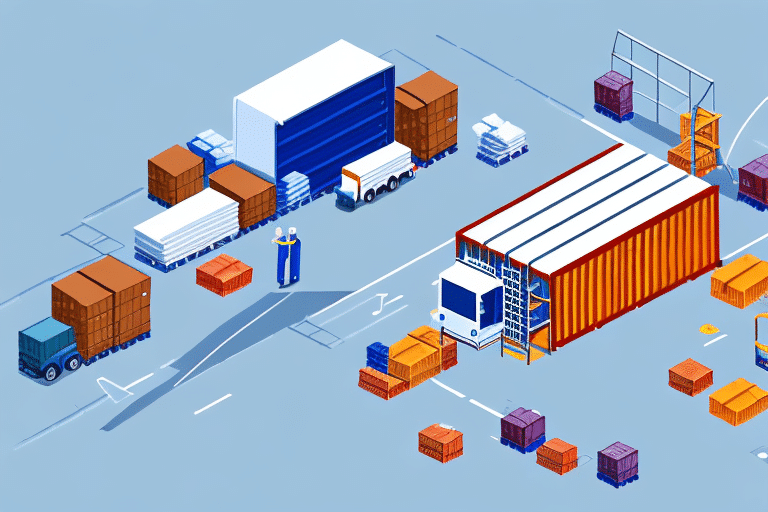Why Integrate DHL eCommerce with SAP Extended Warehouse Management?
In today’s fast-paced marketplace, businesses rely on seamless integration between their logistics and warehouse management systems to deliver exceptional customer experiences and maintain operational efficiency. SAP Extended Warehouse Management (EWM) is a leading warehouse management solution that offers robust capabilities for managing complex warehouse operations. DHL eCommerce, on the other hand, is a global leader in international shipping and logistics solutions.
Integrating DHL eCommerce with SAP EWM enables businesses to streamline their supply chain processes, enhance order fulfillment accuracy, and gain real-time visibility into shipment statuses. According to a 2023 Gartner report, companies that have achieved seamless integration between their logistics and warehouse management systems report a 15% increase in operational efficiency and a 20% improvement in customer satisfaction.
Benefits of Integrating DHL eCommerce with SAP EWM
- Enhanced Supply Chain Visibility: Real-time tracking of orders and shipments provides better oversight and control over the entire supply chain.
- Improved Order Fulfillment: Automated order processing reduces errors and speeds up fulfillment times.
- Cost Savings: Streamlined operations lead to reduced operational costs and optimized resource utilization.
- Scalability: The integration supports business growth by handling increased order volumes without compromising performance.
- Data-Driven Decision Making: Access to comprehensive data analytics allows businesses to make informed strategic decisions.
Furthermore, a study by Harvard Business Review highlights that businesses leveraging integrated logistics and warehouse management systems experience a 25% reduction in order processing times and a 30% decrease in inventory holding costs.
How to Connect DHL eCommerce with SAP Extended Warehouse Management
Connecting DHL eCommerce with SAP EWM involves several key steps to ensure a smooth and efficient integration:
- System Compatibility: Verify that both DHL eCommerce and SAP EWM systems are compatible and meet the necessary technical requirements. This may involve updating software versions or acquiring additional modules.
- Configure Communication Settings: Establish communication parameters to enable data exchange between the two systems. This includes setting up APIs and ensuring secure data transmission.
- Set Up Data Interfaces: Configure interfaces for order and shipment data exchange, ensuring that all relevant data fields are accurately mapped between systems.
- Implement Tracking and Status Updates: Enable real-time shipment tracking and status updates within SAP EWM to provide visibility into order progress.
- Automate Data Synchronization: Set up automatic data synchronization to ensure that information is consistently updated across both systems.
- Test the Integration: Conduct thorough testing to identify and resolve any issues, ensuring that the integration functions as intended.
- Training and Support: Provide training for staff and establish support processes to handle any integration-related queries or issues.
Collaborating with experienced IT professionals or consultants who specialize in SAP and DHL eCommerce integrations can facilitate a successful connection. Refer to SAP's official documentation for detailed configuration guidelines.
Optimizing Your Supply Chain with DHL eCommerce and SAP EWM Integration
To fully optimize your supply chain through the integration of DHL eCommerce and SAP EWM, consider the following strategies:
- Align Warehouse Operations with Shipping Strategies: Ensure that warehouse workflows are synchronized with shipping plans to minimize delays and reduce costs.
- Leverage Real-Time Data: Utilize real-time data from the integrated systems to monitor inventory levels, track orders, and manage shipments effectively.
- Implement Advanced Analytics: Employ data analytics tools to assess supply chain performance, identify bottlenecks, and uncover opportunities for improvement.
- Automate Processes: Reduce manual interventions by automating repetitive tasks such as order entry, inventory updates, and shipment notifications.
- Collaborate with Logistics Partners: Work closely with DHL eCommerce and other logistics partners to coordinate transportation and ensure timely delivery of goods.
According to a report by McKinsey & Company, businesses that implement integrated supply chain solutions see an average of 10-15% improvement in supply chain resilience and responsiveness.
Best Practices for Managing DHL eCommerce Orders in SAP EWM
- Accurate Order Data Entry: Ensure that all shipping information is accurately captured during order entry to prevent errors and facilitate smooth processing.
- Streamlined Communication: Foster effective communication between warehouse and shipping departments to optimize the order fulfillment process.
- Real-Time Inventory Updates: Maintain up-to-date inventory levels in SAP EWM to prevent stockouts and ensure timely order fulfillment.
- Utilize Order Tracking: Provide customers with accurate tracking information by leveraging real-time shipment status updates.
- Automate Order Processing: Implement automation tools to minimize manual errors and improve overall processing efficiency.
Regularly review and analyze order fulfillment data to identify areas for improvement. Tools such as SAP Analytics Cloud can provide valuable insights into processing times, error rates, and customer feedback, enabling continuous optimization of your order management processes.
Overcoming Common Challenges in Integrating DHL eCommerce with SAP EWM
Integrating DHL eCommerce with SAP EWM can present several challenges, including:
- Integration Complexity: Integrating two complex systems requires careful planning and technical expertise to ensure seamless communication and data exchange.
- Data Quality Issues: Inconsistent or inaccurate data can lead to errors in order processing, shipment tracking, and inventory management.
- High Costs: The integration process may involve significant costs related to software licensing, customizations, and professional services.
- Change Management: Ensuring that staff are adequately trained and adapting to new workflows can be challenging.
To overcome these challenges, consider the following approaches:
- Partner with Experts: Collaborate with experienced solution providers who specialize in SAP and DHL eCommerce integrations to navigate technical complexities effectively.
- Ensure Data Accuracy: Implement data validation and cleansing processes to maintain high data quality during integration.
- Plan for Costs: Develop a comprehensive budget that accounts for all aspects of the integration, including software, services, and training costs.
- Implement Change Management Strategies: Provide comprehensive training and support to help staff adapt to new systems and processes.
Additionally, utilizing middleware solutions like SAP Integration Suite can simplify the integration process by providing standardized tools and connectors.
Real-World Success Stories of Integrating DHL eCommerce with SAP EWM
Numerous businesses across various industries have successfully integrated DHL eCommerce with SAP EWM to enhance their supply chain operations:
- Global Consumer Electronics Company: By integrating DHL eCommerce with SAP EWM, the company achieved a 20% reduction in warehouse operational costs and significantly improved its customer satisfaction scores through faster and more accurate order fulfillment.
- European Fashion Retailer: The integration enabled the retailer to streamline its order processing times by 30% and reduce shipping costs by optimizing carrier selection and route planning.
- Leading Pharmaceutical Company: Integration with DHL eCommerce and SAP EWM allowed the company to enhance inventory management, reducing stockouts by 25% and ensuring the timely delivery of critical medicines to patients worldwide.
These success stories demonstrate the tangible benefits that businesses can achieve through effective integration of DHL eCommerce with SAP Extended Warehouse Management.
Conclusion
Integrating DHL eCommerce with SAP Extended Warehouse Management offers businesses a strategic advantage in managing their supply chain operations. The integration provides enhanced visibility, streamlined order fulfillment, cost savings, and improved customer satisfaction.
To ensure a successful integration, businesses should follow best practices, leverage expertise from experienced partners, and utilize robust integration tools. Overcoming common challenges related to integration complexity, data quality, and costs is essential for maximizing the benefits of the integration.
By effectively managing DHL eCommerce orders within SAP EWM, businesses can optimize their inventory levels, enhance operational efficiency, and ultimately drive long-term success in a competitive marketplace.




















